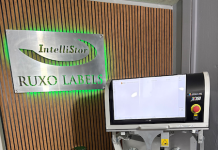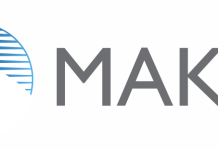On Monday, 21 October, the first papers in this year’s National Senior Certificate, or matric, exams will be written. Each of South Africa’s nine provinces has an exam-printing department, which runs the process of outsourcing the production and delivery of papers.
Independent third-party providers print all Grade 12 papers, but several provinces are also looking at centralising and outsourcing exam printing for the lower grades. Papers for the lower grades are mostly set and printed by each high school individually.
Altron Document Solutions (ADS) is the printing partner currently coordinating the exam-paper printing process for the departments of education in six provinces.
As a member of a consortium, another partner manages all aspects of security and a third deals with the packaging and distribution of papers to and from the schools and the various exam marking centres.
Keith Knott, head of sales and operations at ADS, said that Grant Martin, a senior member of their Production Services Group, has been central to the exam printing operation for more than a decade. The consortium of which ADS is a member, was put together in 2014 and in the same year secured its first provincial contract. At the time of writing, the partners had just submitted a tender to a seventh province.
Knott explained that his company manages the printing facility, ‘We supply the printing and finishing machines, the staff who operate the equipment and the round-the-clock technical support. Our back-office team manages invoicing and queries, and in case of a breach of security, our internal security people are involved in investigations.’
Security is at the heart of the consortium’s activities. Every single person who works at the print facility undergoes a criminal record and credit check every six months, and no one with a child in grades 10, 11 or 12 is allowed on site. These staff members are redeployed to less secure sites that serve less sensitive clients until their children have finished school.
Every exam-printing site is monitored by security guards and with CCTV cameras 24/7, access control is biometrics-based and staff are searched when they enter and exit. No mobile phones are allowed inside the facility and even senior staff members, such as Knott himself, must get permission from the site manager to enter the facility and may not move around unaccompanied.
In terms of document security, Knott said that ADS is a member of Printing SA and that its consortium partner is an accredited PrintSecure printing partner. Managed by Printing SA, the accreditation is aligned to ISO 14298 Graphic Technology (management of security printing processes) standards and provides a printer’s clients with the confidence that they are dealing with a provider who meets international standards and is assessed every year for continued compliance.
Top-class printing machines and the management processes followed by the print team combine to ensure watertight security. The file with the exam paper to be printed is submitted in encrypted format to the quality control staff at the provincial department. Once they have completed their quality checks, an un-corruptible file is given to the printing site manager who, after running a check of his own, sends a sample print to the machines. The staff assigned from the Department of Education check the sample and sign off on it, after which the approved sample is placed into a safe. The operator then releases the exact quantity of paper required for the job, ensuring no extra exam papers can be printed without additional paper being released by the site manager.
Any spoiled copies, for example, due to a skewed print, torn paper, or quality-related problems, must be handled by a security officer, not the machine operator. The security officer counts and records the number of spoils and then destroys them in a high-security shredder. The bags of destroyed paper are removed by a disposal company under secure conditions. The printing machine also has a job-override function, meaning that it retains no memory of the print. The site manager has to release more prints if needed and justify why.
Knott stated that ADS’ responsibility ends when the printed exam papers are handed over to the distribution company, which packs and transports the paper. All exam papers are distributed in vans fitted with cameras. Driving times are carefully checked and all stops are monitored.
At the school, only specific staff members are verified to receive the papers. They count the packs and sign for delivery. Once marking has been completed, the marked papers are collected by the distribution company and returned to the print precinct where they are scanned and then high-volume guillotined. The scans are stored in an electronic vault that allows for record keeping.
In terms of timing, papers for big exams such as Maths (a single paper can run to 16 pages and up to 150,000 learners sit the exam) are printed in advance and stored securely on site. Small runs, for example, the French paper or papers printed in Braille, can be done in the morning for next-day delivery. In remote areas, papers can be delivered two days before writing; in all other cases, the papers are delivered on the morning of the exam.
‘Timing is critical,’ noted Knott. ‘We get the full exam timetable and schedule when the papers must be ready for distribution at around mid-year and work out our print schedule accordingly.’ Planning has to be precise, as the printing of a new paper can only start when the previous one is fully completed – two jobs can never be done simultaneously on the same machine.
Over the past 10 years, breaches have been few and far between. Even so, contingency plans are always in place and if something should happen, the consortium partners and the relevant Department of Education work together quickly to remedy the situation.
It takes trust and integrity to make a partnership work in such a specialised environment, along with a shared commitment to succeed and for each player to do their bit to help secure the future of the students writing exams. All the consortium partners get behind this common purpose. It focuses their efforts to jointly provide the technology, security and human support that ensure the credibility of the exam printing process.
ALTRON DOCUMENT SOLUTIONS
+27 11 928 9111
hotline.marketing@bdsol.co.za
www.altron.com
https://www.bdsol.co.za





















